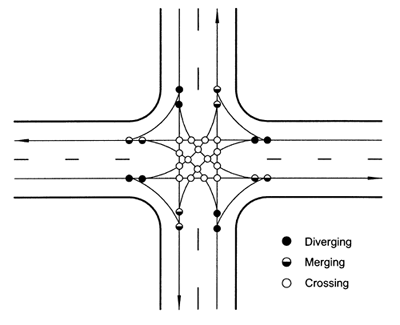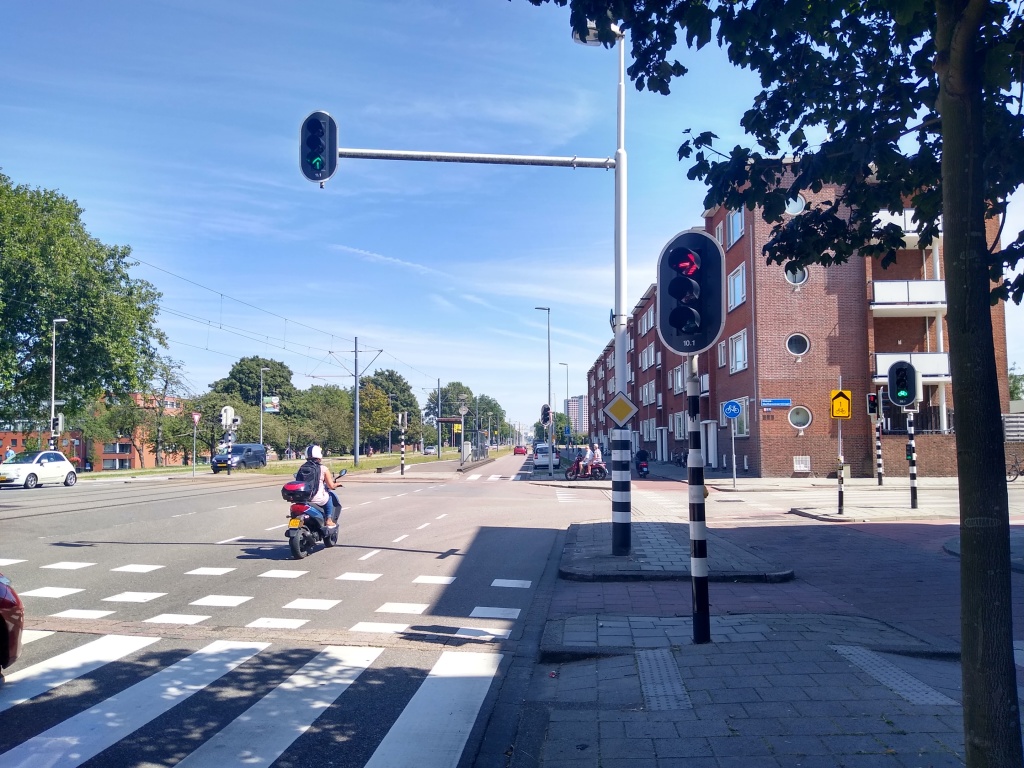Fewer Traffic Lights
Finally, one of the best ways to improve traffic lights is to actually have less of them. The theoretical capacity of a “free-flowing” vehicle lane is 1,800 cars per hour. Once you introduce signals though, that capacity is reduced based on the amount of green time that lane receives. If that vehicle lane now encounters a signal with timing split evenly between both directions, the capacity of that lane is reduced to less than 900 vehicles per hour (because of the time lost due to all directions receiving a red signal).
Now, to compensate for that reduced capacity, you need to add another vehicle lane. But adding another lane will make the intersection wider, which means the side street needs to receive more green time to allow pedestrians to cross the street, so more green time is lost on the main roadway. So another vehicle through lane is added to compensate, but this too results in less green time for the main street!
You can clearly see the diminishing returns.
In many cases it may be simpler to just remove the traffic light, reduce the number of travel lanes, and slow down motor vehicles to provide an environment where road users can negotiate with each other for space, rather than relying on a signal to set the rules for them. At high-volume intersections, a roundabout is likely the valid alternative. While Amsterdam received a lot of attention recently for
turning off one of its traffic lights, most of the time the Dutch don’t even provide traffic signals to begin with. The Netherlands has
5,500 traffic signals in the entire country (0.4 signals per 1,000 people). By comparison, the island of Manhattan alone has 2,800 signals (1.7 signals per 1,000 people).
Overhauling the Canadian and US approach to traffic signals is not easy or simple, and will take time. More education will be needed. New technologies will need to be developed and installed. Standards will need to be rewritten. But again, we must ask the question: “if the Dutch can do it, why can’t we”?
It is clear that this is not an issue of an insurmountable technological hurdle. The hurdle we face is one of policy and practice. If we truly wish to prioritize safe and efficient travel for all road users, we must demand more of our traffic signals, starting with policy. If policy leads, technology will surely follow.










